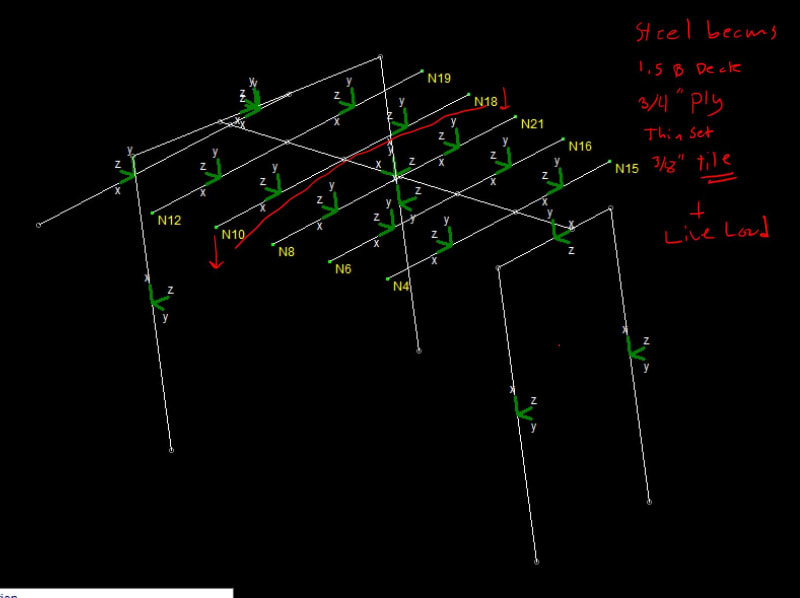EngStuff
Structural
- Jul 1, 2019
- 81
This is one of those projects that I need major opinions on.
I have a Mezz. that will be considered a "stage floor" that will only be supported by 1 Beam. This beam will be an HSS member which will be supported by girders that are also HSS and HSS columns. the cantilever beams might be tapered plates or tapered W-shape beams with steel cladding or combination of both. Moment connections are everywhere including a fixed base. The floor is tile.![[sad] [sad] [sad]](/data/assets/smilies/sad.gif) see image below.
see image below.
When it comes to deflection. Since we have both cantilever beams deflecting at their ends. At the center beam, I am worried about a tension strain on the thin set and tile(cracking). I think I will end up calling for a uncoupling membrane but that might not be enough. I am also worried about a "bump" at the center beam due to deflection on both sides.
I analyzed with full dead and live load. I also analyzed with full dead with skip live loading one each side.
My question is, what do you guys think I should hold the deflection to in this case? Also, is there anything I should take into account when designing this that I might not have thought of. Any pointers? I have admittedly not dealt with a floor like this.
Floor dead load will consist of
1. Steel beams
2. 1.5B metal deck
3. 3/4 ply
4. Thin set
5. 3/8" tile
6. Misc.
(uncoupling membrane?)

I have a Mezz. that will be considered a "stage floor" that will only be supported by 1 Beam. This beam will be an HSS member which will be supported by girders that are also HSS and HSS columns. the cantilever beams might be tapered plates or tapered W-shape beams with steel cladding or combination of both. Moment connections are everywhere including a fixed base. The floor is tile.
![[sad] [sad] [sad]](/data/assets/smilies/sad.gif) see image below.
see image below.When it comes to deflection. Since we have both cantilever beams deflecting at their ends. At the center beam, I am worried about a tension strain on the thin set and tile(cracking). I think I will end up calling for a uncoupling membrane but that might not be enough. I am also worried about a "bump" at the center beam due to deflection on both sides.
I analyzed with full dead and live load. I also analyzed with full dead with skip live loading one each side.
My question is, what do you guys think I should hold the deflection to in this case? Also, is there anything I should take into account when designing this that I might not have thought of. Any pointers? I have admittedly not dealt with a floor like this.
Floor dead load will consist of
1. Steel beams
2. 1.5B metal deck
3. 3/4 ply
4. Thin set
5. 3/8" tile
6. Misc.
(uncoupling membrane?)



